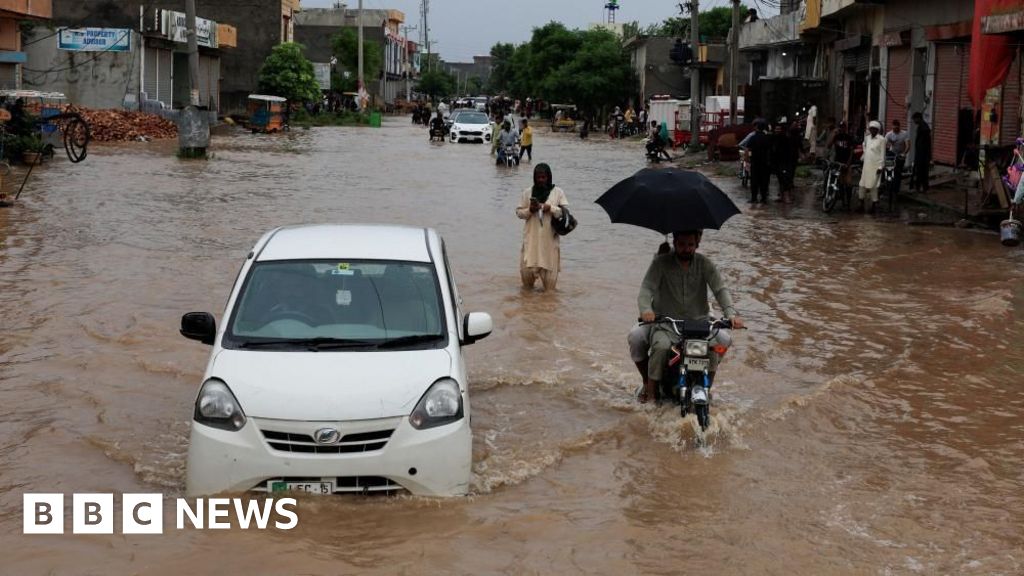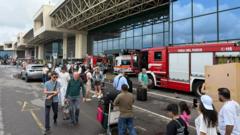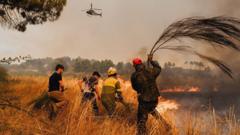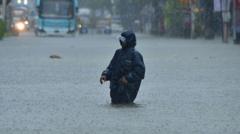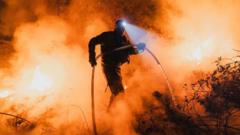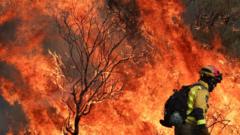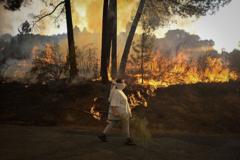Environmental officials in Canada highlighted that rigorous outdoor activities should be avoided due to the hazardous air quality levels. This situation has drawn criticism from some U.S. lawmakers, who are pointing fingers at Canadian forest management practices. As temperatures remain high, the health impacts of smoke are a growing concern for residents.
Smoke from numerous wildfires in Western Canada is heading eastward, creating dangerous air quality situations across several regions in Canada and northern parts of the U.S. Midwestern states. Toronto, Canada’s largest city, is among the municipalities struggling with this issue.
Following a hot weekend, the city was blanketed in haze, leading Environment Canada to issue air quality alerts. According to IQAir, a global air monitoring network, Toronto's air quality ranked as one of the worst on the planet early this week. Officials recommend residents refrain from engaging in strenuous physical activities outdoors.
In the U.S., a deterioration in air quality has been recorded in areas around the Great Lakes, particularly northern Minnesota, Wisconsin, western New York, and northern Pennsylvania. Meteorologist Ian Hubbard from Environment Canada explained that while wildfire smoke in the upper atmosphere is generally less harmful, it significantly impacts air quality when it moves closer to the earth’s surface.
In Manitoba, the wildfires have reached alarming levels, prompting the provincial government to declare a state of emergency for the second time within a month to facilitate resource distribution and evacuations. The harsh conditions have already led to casualties, including two fatalities in May and thousands being displaced from their homes.
Furthermore, tensions have arisen between Canada and the United States over the smoke. Republican legislators from Wisconsin and Minnesota are urging the Canadian government to address what they claim are failures in forest management. U.S. Congressman Tom Tiffany has publicly criticized Canadian authorities, linking the smoke to their forest management strategies.
However, most wildfires in Canada stem from natural causes, predominantly lightning strikes. Many of these fires ignite in isolated regions that are challenging to manage due to accessibility issues. As major regions grapple with the implications of the wildfires, the situation is a growing public health and environmental concern.
Wildfire smoke continues to blanket cities, stressing the need for adequate forest management and emergency preparedness as the fire season intensifies.
---
Smoke from numerous wildfires in Western Canada is heading eastward, creating dangerous air quality situations across several regions in Canada and northern parts of the U.S. Midwestern states. Toronto, Canada’s largest city, is among the municipalities struggling with this issue.
Following a hot weekend, the city was blanketed in haze, leading Environment Canada to issue air quality alerts. According to IQAir, a global air monitoring network, Toronto's air quality ranked as one of the worst on the planet early this week. Officials recommend residents refrain from engaging in strenuous physical activities outdoors.
In the U.S., a deterioration in air quality has been recorded in areas around the Great Lakes, particularly northern Minnesota, Wisconsin, western New York, and northern Pennsylvania. Meteorologist Ian Hubbard from Environment Canada explained that while wildfire smoke in the upper atmosphere is generally less harmful, it significantly impacts air quality when it moves closer to the earth’s surface.
In Manitoba, the wildfires have reached alarming levels, prompting the provincial government to declare a state of emergency for the second time within a month to facilitate resource distribution and evacuations. The harsh conditions have already led to casualties, including two fatalities in May and thousands being displaced from their homes.
Furthermore, tensions have arisen between Canada and the United States over the smoke. Republican legislators from Wisconsin and Minnesota are urging the Canadian government to address what they claim are failures in forest management. U.S. Congressman Tom Tiffany has publicly criticized Canadian authorities, linking the smoke to their forest management strategies.
However, most wildfires in Canada stem from natural causes, predominantly lightning strikes. Many of these fires ignite in isolated regions that are challenging to manage due to accessibility issues. As major regions grapple with the implications of the wildfires, the situation is a growing public health and environmental concern.
Wildfire smoke continues to blanket cities, stressing the need for adequate forest management and emergency preparedness as the fire season intensifies.
---










